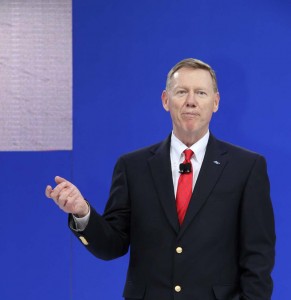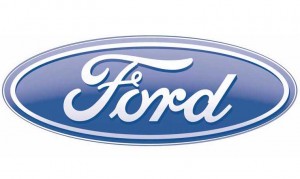Ford Motor Co. has posted its best third-quarter profit in two decades, reporting earnings of $1.69 billion for the July-September quarter, or 43 cents per share.
Yet again, the earnings ran ahead of what industry analysts had been forecasting, at least once special charges were excluded from the results, which would raise the number to 48 cents a share – 10 cents more than what had been collectively forecast, according to Thomson One Analytics, by 12 key analysts.
While net income rose 68% compared to year-earlier numbers, Ford saw a 3%, of $1 billion, drop in quarterly revenues. But excluding sales by Volvo, the Swedish subsidiary Ford sold this year, the U.S. makers revenues actually rose $1.7 billion.
“This was another strong quarter and we continue to gain momentum with our One Ford plan,” proclaimed CEO Alan Mulally, referring to the strategy he began implementing after joining the automaker four years ago. The One Ford plan has re-focused the company on its core Ford and Lincoln brands, resulting in the sell-off of European-based marques, such as Jaguar and Volvo, and the closure of the moribund Mercury division.

Things have turned around for Ford since 65-year-old Alan Mulally joined the company four years ago.
Mulally also took the critical, if painful, step of mortgaging much of the automaker’s assets, but that generated enough cash to keep it going through the worst of the recession, last year, without declaring bankruptcy or turning to the federal government for a bailout – unlike domestic rivals General Motors and Chrysler.
Ford says it will use some of its profits to continue paying down that debt, which stood at $26.4 billion as of the end of September. That figure reflects the $10.8 billion in debt reduction efforts already taken this year. And the automaker now is offering to convert $3.5 billion in debt to common stock, an offer that closes November 23.
Such moves will save the company about $800 million in annual interest, according to Treasurer Neil Schloss.
Meanwhile, Ford plans to pre-pay $3.6 billion the company owes to its VEBA, a union-run health care plan that helped get its massive retiree medical cost problem off the automaker’s books.
Ford’s steady recovery is being driven by a variety of factors, including its internal efforts to trim costs, but arguably most significant are the gains it has been making in sales and share – which jumped to 15.1% for the quarter, up from 13% the year before — and the increase in its average transaction prices – the figure customers actually pay for a vehicle.
Ford’s average vehicle carried an ATP of $30,636 in September, an increase of 10% over five years, according to the firm Edmunds. While that includes the impact of inflation, it is also the result of lower incentives and the rising purchase of such options as the new Sync multimedia system, which Ford claims to be proving an effective tool in luring customers away from the competition.
Increased transaction prices added another $400 million in pre-tax earnings, Chief Financial Officer Lewis Booth said.
Demand is leading Ford to increase production and capacity after years of decline. Yesterday, the maker announced it would invest $850 million in a transmission plant in Sterling Heights, Michigan, along with six other facilities in the recession-racked state. The investment is expected to create 1,200 full-time jobs, including 900 hourly positions. (Click Here for more on that story.)
Ford already earned more than $4.7 billion for the first half of 2010, and with the newest figures it appears on track to what could be its best year since 1999, and a sharp reversal of recent losses. That number is all the more significant considering U.S. industry sales are down by roughly a third since peaking in the middle of the last decade.
And despite the debt pay-down, Ford reports it ended the quarter with $23.8 billion cash on hand, up from $21.9 billion the year before.
“The company is well-positioned to continue generating strong earnings and cash flow through 2011, and to further strengthen its balance sheet,” said a report by J. Bruce Clark, senior vice president at Moody’s.
The strong third-quarter performance raises prospects that Ford might yet be able to push its debt rating back to investment grade, something CFO Booth describes as a “rallying cry” for Ford.
Ford’s strong third-quarter performance is expected to be echoed across the domestic industry. Chrysler is projected to report improved earnings on November 8th, while its Italian affiliate, Fiat, said it generated $236 million in profits for the quarter. General Motors, meanwhile, also is giving signs of improved finances and is anticipated to post its third quarterly profit in a row. It will announce that figure sometime next month, most likely just before staging its much-anticipated IPO.

